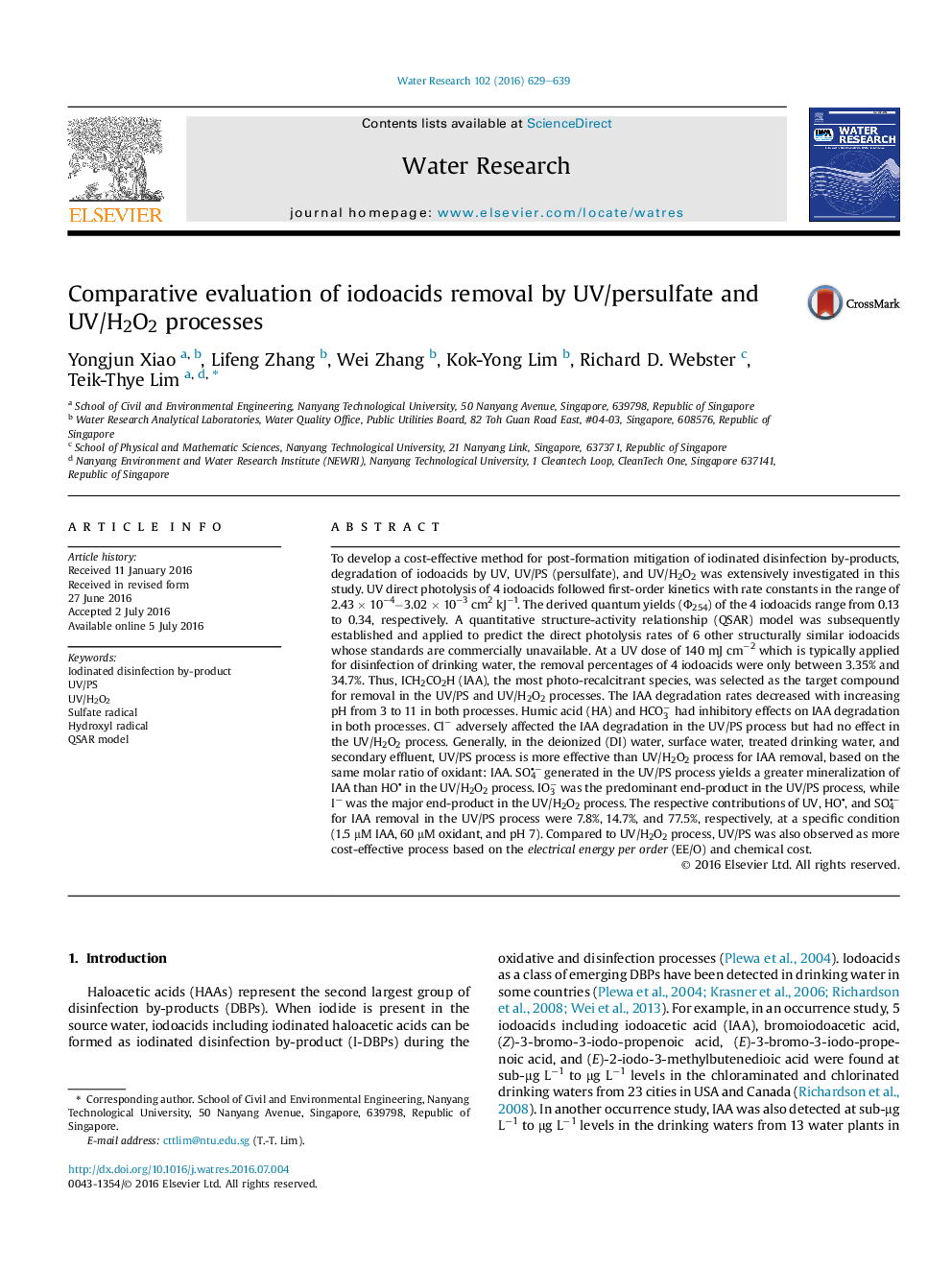| کد مقاله | کد نشریه | سال انتشار | مقاله انگلیسی | نسخه تمام متن |
|---|---|---|---|---|
| 4480893 | 1623066 | 2016 | 11 صفحه PDF | دانلود رایگان |
• Photodegradation of iodoacids by UV, UV/persulfate, and UV/H2O2 was investigated.
• A quantitative structure-activity relationship model was established for direct photolysis.
• UV/PS and UV/H2O2 were compared for operational efficiency and degradation products.
• The respective contributions of UV, HO, and SO4− for IAA removal were determined.
• Economic comparison of AOP systems was based on energy and oxidant consumption.
To develop a cost-effective method for post-formation mitigation of iodinated disinfection by-products, degradation of iodoacids by UV, UV/PS (persulfate), and UV/H2O2 was extensively investigated in this study. UV direct photolysis of 4 iodoacids followed first-order kinetics with rate constants in the range of 2.43 × 10−4−3.02 × 10−3 cm2 kJ−1. The derived quantum yields (Ф254) of the 4 iodoacids range from 0.13 to 0.34, respectively. A quantitative structure-activity relationship (QSAR) model was subsequently established and applied to predict the direct photolysis rates of 6 other structurally similar iodoacids whose standards are commercially unavailable. At a UV dose of 140 mJ cm−2 which is typically applied for disinfection of drinking water, the removal percentages of 4 iodoacids were only between 3.35% and 34.7%. Thus, ICH2CO2H (IAA), the most photo-recalcitrant species, was selected as the target compound for removal in the UV/PS and UV/H2O2 processes. The IAA degradation rates decreased with increasing pH from 3 to 11 in both processes. Humic acid (HA) and HCO3− had inhibitory effects on IAA degradation in both processes. Cl−Cl− adversely affected the IAA degradation in the UV/PS process but had no effect in the UV/H2O2 process. Generally, in the deionized (DI) water, surface water, treated drinking water, and secondary effluent, UV/PS process is more effective than UV/H2O2 process for IAA removal, based on the same molar ratio of oxidant: IAA. SO4− generated in the UV/PS process yields a greater mineralization of IAA than HO in the UV/H2O2 process. IO3− was the predominant end-product in the UV/PS process, while I− was the major end-product in the UV/H2O2 process. The respective contributions of UV, HO, and SO4− for IAA removal in the UV/PS process were 7.8%, 14.7%, and 77.5%, respectively, at a specific condition (1.5 μM IAA, 60 μM oxidant, and pH 7). Compared to UV/H2O2 process, UV/PS was also observed as more cost-effective process based on the electrical energy per order (EE/O) and chemical cost.
Figure optionsDownload high-quality image (126 K)Download as PowerPoint slide
Journal: Water Research - Volume 102, 1 October 2016, Pages 629–639
